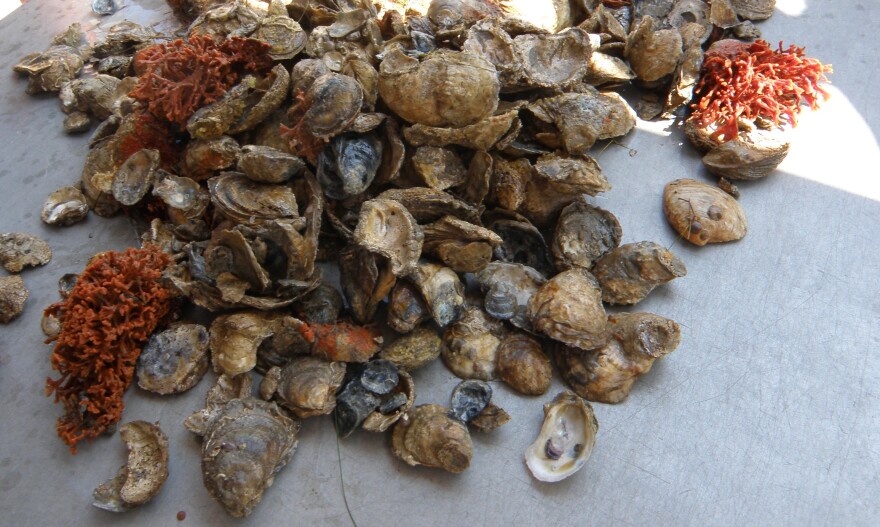Ten years ago, President Obama issued an executive order requiring Maryland and Virginia to restore oyster populations, decimated by disease, over-harvesting and pollution, to tributaries of the Chesapeake Bay by 2025.
But that has been easier said than done, according to state and federal scientists meeting in Newport News, Va.
They started trying to build sanctuaries in 20 tributaries, 10 in each state. But that turned out to be too ambitious, so they cut the number in half, five in each state.
Another blow came when they realized much of the oyster shell needed to rebuild reefs was scarce and expensive because it was being used to build a commercial aquaculture industry.
Despite that, scientists with the Army Corps of engineers in Maryland and Virginia say they are making progress.
Scientists have used stone and other kinds of shell to complete one sanctuary in each state and they say there are more on the way.
Stephanie Reynolds Westby, who heads the national Oceanic and Atmospheric Administration’s Chesapeake Bay restoration efforts, says the bottoms of those tributaries were pretty muddy, with only a few oyster shells sticking up here and there when they began.
“And what we are seeing on the restored reefs by contrast, lots of complex habitat, lots of stone, lots of oyster shell, lots of live oysters sticking up into the water column,” she said. “In some cases, oysters growing on top of oysters, which is really what we're looking for to kind of rebuild that whole complex reef structure that we had 100 or 150 years ago but has been decimated.”
For example, there’s the sanctuary reef in Harris Creek on Maryland’s Eastern Shore. At 350 acres, it’s the largest restoration project in the U.S., a little bigger than the National Mall in Washington, D.C. And it has attracted scientists from as far away as China and Denmark who want to study it.
But watermen, who are bound by wild catch restrictions, want access to sanctuaries. They argue that sanctuaries are where oysters go to die, and they use farm analogies to justify fishing them.
“If you don't cultivate it, it's like a garden, it's not going to grow, it's not going to produce,” says Ernie George, a Virginia waterman.
“Just like a farmer,” adds waterman Kent Carr. “If you don't work it, it grows up pine trees.”
But scientists say they’ve have heard that all before and they aren’t buying it.
Andrew Button, who heads Virginia's oyster conservation efforts, says the analogy doesn’t hold water because the heavy dredging equipment watermen use tear up the reefs.
Button says he usually tells watermen they’re right, you do need to work the bottom like farmers work their fields. But farmers are very careful about how they work the fields.
“They're not going out and catching all the crops as quickly as they can, year after year, and putting nothing back and expecting to catch more the next year,” he says.
And then there's President Trump, who tries to zero out bay restoration funding each budget cycle and whose administration continues to roll back pollution regulations that directly affect the bay. And conservationists say they are bracing for another round this year.
Chesapeake Bay Foundation president Will Baker sharply criticized Trump during his recent state of the bay report, which downgraded the bay’s health from a C- to a D+ because of the unusually heavy rains that washed pollution into the waters.
“The Trump administration must stop trying to eliminate environmental laws and regulations that have enjoyed decades of bipartisan support,” he said. “Clean water and clean air should be a right, not a luxury we have to fight for. But if it's a fight this administration wants it's a fight the American public will give to them.”
For now, bay scientists will monitor the completed reefs, which they say will help clean the waters around them - one oyster can filter some 50 gallons of water in a day—while Maryland and Virginia work to complete projects underway and plan sanctuaries in several more tributaries.
For more information and to see where the sanctuaries are located, check out the Chesapeake Bay Program's interactive map at https://www.chesapeakebay.net/state/oysters





